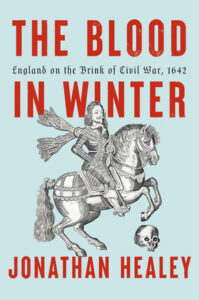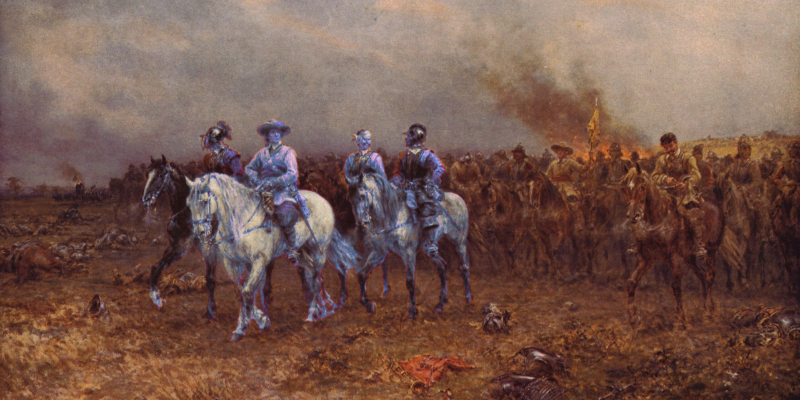In the beginning, there were no kings.
Article continues after advertisement
Where had they come from? Why had rule been left to these certain families, who looked and smelled no different to everyone else? By the seventeenth century there were two sets of theories.
One was that kings had been created by God. In some way or other, divine sanction had been handed down to certain favored dynasties. This might have been through battle and conquest, or through the natural outgrowth of the patriarchal authority of fathers. But now they were anointed and now they could not be touched.
There was another collection of ideas, though. These were different entirely. Kings, it was held, drew their power from those they reigned over. It came from the people. At some point, in the mists of a distant past, the people had gathered together and placed one family above them all. The repercussions of this original act remained, for though the authority monarchs had was strong and broad, ultimately there was always a chance that it might one day be rescinded.
These debates traversed borders and boundaries. They crossed the rivers and the snowy peaks that separated European states and nations. Each polity had its own nuances and England was no different. In this green and prosperous land on Europe’s Atlantic edge, people wondered what it meant that, back in 1066, the country had been invaded and brutally subdued by the Normans.
In proportional terms, more died then than during the industrial slaughter of the First World War.
Had William ruled by conquest? And did he, therefore, have a free hand to do as he wished? Or had he agreed to reign in keeping with old Saxon liberties? What about the rules and institutions that grew up afterwards as the Anglo-Norman monarchy matured? What came first, the Crown or the law? Were laws granted by kings, or were monarchs beholden to laws?
In medieval times, the English law had grown from royal seeds. Then there had been arguments and even wars about the powers of kings versus the rights of their nobles and people. Magna Carta (1215) had set out some limits to the Crown. Henry III had faced civil war and revolution; Richard II had been deposed. But the monarchy remained. Under the Tudor dynasty—which arrived after a century of dynastic disorder and the eventual deposition of another alleged tyrant—that monarchy grew stronger. However, even Henry VIII relied on his nobles, his laws, and his parliament. When England broke with Rome, the most epoch-defining event of that reign, the deed was done by parliamentary statute.
But what was Parliament? Where had that come from? What was the purpose of that body of representatives that now sat in the small riverside city of Westminster? Some said it enjoyed its role at the sufferance of the monarchy. That it was merely a tool for enacting the monarch’s legislative program and providing them with taxes. Others that it had a deeper presence, as a guarantor of English liberties. Maybe it was older than the monarchy itself ? These were difficult, fundamental questions.
In 1642, England collapsed into a violent civil war. This is a book about why that happened, about the political crisis that brought the country to the brink. It is about how a functioning and sophisticated state, well-grounded in law, constitutionally mature, and with an educated political class, found itself descending into bloodshed.
The “English Civil War” was really a broader set of conflicts. They crossed the archipelago and even spread over the great Atlantic Ocean to the new American colonies. These bitter wars would be at their bloodiest in Ireland, but even in England—for long a fairly settled state—the death toll would be huge. In proportional terms, more died then than during the industrial slaughter of the First World War.
The religious significance of the seventeenth-century conflicts would be very great indeed. Many joined sides for reasons of faith—some historians even see this as not the “first modern revolution” but the “last of the wars of religion.” The Parliamentarians were usually Puritans; the royalists, on the other hand, wanted a return to the old ways—the traditions and rhythms that had held the English Church together for generations—since the break with Rome at least, and sometimes beyond even that.
The royalists would lose. From the 1640s onwards, England became a strikingly pluralist society, with various small Protestant groups vying with a persistent Catholic minority and the Anglican mainstream. But in the longer run, it was the establishment’s vision of Anglicanism—or Episcopalianism—that came to dominate.
The reality is that the legacy of the civil war is diverse, and reflects the distinctive victories of both sides. In any English town, and in most English villages today, there is a bewildering variety of Christian sites of worship: churches, chapels, and meeting houses. As I write this, I’m staying in the glorious, honey-stoned Wiltshire town of Bradford-on-Avon. It has its grand parish church, for sure. But there are nonconformist sites too: a Presbyterian church and Baptist chapels. Tucked away, somewhat out of sight, is a Quaker meeting house. This diversity owes much of its origin to the seventeenth century, as of course—for very different reasons—does the survival of Catholicism.
To understand this war, this catastrophe, this fracture, this great awakening—whatever it was—we must follow these characters, their foibles and failings, their moments of glory and bravery.
The wars, which ran in England from 1642 to 1651, had long-term constitutional consequences, too, though not ones that could have been easily predicted. Under James I and then his son Charles I, the English monarchy pursued a roughly “absolutist” path, arguing that its power came from God, and that it was ultimately above the law. It would lose that argument. In 1649, the monarchy would be abolished and the king found guilty of treason in circumstances that were either legally highly dubious, or politically revolutionary, depending on the reader’s preference. Maybe they were both.
And though the monarchy would return in 1660, the lessons of the 1640s were not forgotten. It would be a monarchy with limits, to a much greater degree than that of France, or Russia, Austria, or Prussia. The fact that the constitutional monarchy of the United Kingdom survives to this day is a product of this painful process of limitation. It is a curious entity, that constitutional monarchy. Nowadays in the UK, we still try to avoid thinking too much about the precise powers of our sovereign, though I suspect that if it came down to it—if, say, Parliament tried to legislate and the king refused his assent—we would decide that it was the people, ultimately, who were the origins of power.
That was the conclusion in 1649, and it was the basis of much of the Parliamentarian side in 1642 as well. Things are much clearer in other countries: in the United States of America, in particular, where these debates helped inform another constitutional revolution in 1776–83. In the US, there has also been a much clearer adoption of one the central elements to the Parliamentarian cause.
As I write this, a new president has been elected, and he is picking his government officials. But they will be vetted by Congress, which is almost precisely the arrangement that the Parliamentarians tried to force on King Charles I in 1641–2, and which he so vehemently refused. After all, in his eyes, it would leave him no more than a figurehead in a republic. Time will tell how robust these constitutional safeguards will prove to the US.
England’s story in those months before the war was, and is, a salutary lesson. It reminds us of an uncomfortable truth, that nations can collapse with alarming speed in the face of a constitutional crisis. In England this took five years at most—from the moment in 1637 when the Scots rebelled against King Charles to the opening salvoes of a shooting war in the summer of 1642. Yet really the breakdown happened even quicker. In the late summer of 1641, it had looked like Charles was in a position to win the political game. His support was growing, and his enemies were increasingly isolated and unpopular. With the right mix of political skill and determination, he might have been able to fight back and secure his authority.
Then came winter. With it, chaos, protests, political deadlock, and eventually a remarkable, dangerous, and now notorious attempt by Charles to destroy his opponents by arresting five of them in the very chamber of the House of Commons at the head of a small army. After this, compromise proved impossible: week followed week, escalation piled upon escalation.
The story of how England descended into war is a riveting and fascinating one, laced with intrigue and horror. It is also a very human story: a battle not just of ideas but of personalities. In telling this story, I hope to bring some of those people to life: not only the big hitters like King Charles I, or the opposition MP John Pym, but some of the lesser-known men and women—some of whom played a very significant role indeed, and all of whom eventually faced unpalatable choices.
We must get lost in their world. To understand this war, this catastrophe, this fracture, this great awakening—whatever it was—we must follow these characters, their foibles and failings, their moments of glory and bravery. It is not a story that provides easy heroes and villains: the seventeenth century never does. But it is a compelling one, nonetheless. Because to put ourselves in this world is to grapple with something momentous indeed. With a crisis and a revolution that broke, and made, a nation.
__________________________________

The Blood In Winter: England on the Brink of Civil War, 1642 by Jonathan Healey is available from Knopf. Used with permission of the publisher. Copyright © 2015 by Jonathan Healey.
